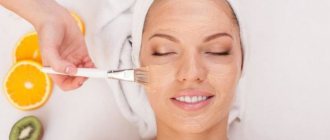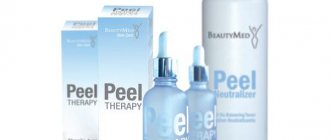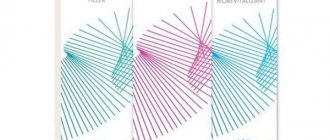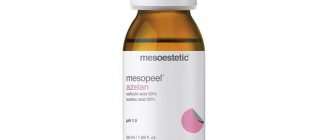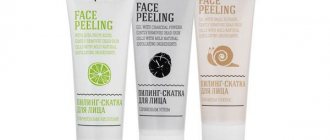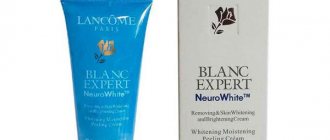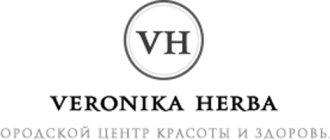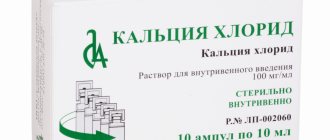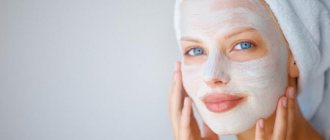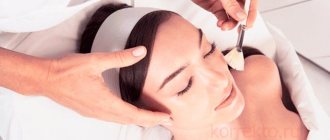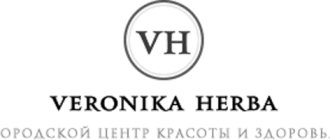The acid peeling procedure is carried out in 4 stages:
1. PREV
- peeling preparation: makeup removal, scrubbing, degreasing
2. Peeling procedure: application of acid
3. Neutralization of acid action
4. FAST
- peeling care - cosmetics in the salon and recommendations for home care
INDICATIONS FOR ACIDS PEELING:
The superficial chemical peel procedure can be performed on any area of the skin. Most often, chemical peeling is performed on the face, neck, back, décolleté and hands.
Depending on the type of drug, superficial chemical peels are used to correct cosmetic defects:
- Age-related changes
- Photoaging
- Pigmentation
- Hyperkeratosis
- Dull complexion, uneven skin tone
- Problem skin (acne, post-acne)
- Oily skin, increased sebum production
- Uneven skin texture, enlarged pores, scars, scars
- Prevention of premature aging
Also, superficial chemical peels are used to prepare for medium and deep peels, plastic surgeries, and injection procedures.
Extent of skin damage during peeling
may be different:
- exfoliation of the stratum corneum,
- destruction of the epidermis,
- damage to the dermis.
Therefore, according to the criteria, peelings are divided into:
- superficial
, pH of the composition is not lower than 3.5 with an acid concentration of no more than 10%, does not require neutralization, is washed off with water.
- superficial-median
, the pH of the composition is below 3.5 with an acid concentration of more than 10% - requires neutralization.
- average
(median),
- deep
.
SUPERFICIAL CHEMICAL PEELING
Superficial peeling is the most common procedure and has the lowest rate of complications. Damage within the stratum corneum, to the granular layer of the epidermis.
REHABILITATION PERIOD:
1-3 days - minor hyperemia and peeling, which do not affect the patient’s lifestyle. The damage in this case is shallow, but it affects a very important area from a biological point of view - the stratum corneum, and is already stressful for the skin.
MEDIUM CHEMICAL PEELING
With a deeper impact, when the entire epidermis is damaged down to the dermis. Damage to the basal layer of the epidermis, coagulative necrosis can reach the capillary layer of the dermis.
REHABILITATION PERIOD:
about 7 days - hyperemia, swelling, noticeable peeling. Moderate hyperemia may persist for 2 weeks.
DEEP CHEMICAL PEELING
Complete destruction of the epidermis, coagulative necrosis to the middle of the reticular layer of the dermis.
REHABILITATION PERIOD:
2-4 weeks.
The time for complete epithelization of the wound surface is 6-10 days. Depending on the peeling, erythema persists for up to 4 months.
ONLINE TRAINING Online courses Piercing. Video course cosmetology.
The given data can be considered conditional
, since the effect depends on the pH of the drug used, the exposure of the drug on the skin, the amount of solution applied, the condition of the patient’s skin and other factors.
Chemical peeling is essentially a chemical burn to the skin. In order to minimize complications and side effects, modern formulations have been developed that allow maximum control over the course of the procedure.
Also, strict adherence to the protocol of procedures, pre-peel preparation and post-peel care will help to avoid unforeseen negative consequences.
What happens during acid peeling?
A complex sequence of interconnected events unfolds in the skin, some of which ultimately lead to an improvement in the structure of the skin, while others can cause complications:
1. Any stress stimulus causes skin cells to release many different signaling molecules. These are growth factors, inflammatory mediators, vasoactive substances, etc.
The ability to secrete signaling molecules allows skin cells to act as a single whole, but it also creates problems for cosmetologists, since it is sometimes impossible to predict which cellular elements will be affected by a particular impact and what processes are launched.
For example, keratinocytes that experience stress release substances that stimulate pigmentation. Because of this, any aggressive impact can lead to hyperpigmentation.
2. In response to stress, enzymes are activated that destroy the intercellular substance. This leads to a positive result - a restructuring of skin structures, when new molecules are quickly synthesized to replace destroyed collagen and glycosaminoglycans. In general, cells in the damaged area secrete many different enzymes, with the help of which they dissolve both necrotic tissue and various temporary structures created during the restoration work.
3. The growth of new blood vessels begins, which are necessary for the delivery of building materials, cellular elements, and the removal of metabolites to the area of restoration work.
4. Cells capable of absorbing bacterial cells and foreign particles—macrophages—accumulate in the area of damage. Macrophages migrate into damaged tissue from the bloodstream. These are very important participants in the restoration process, coordinating the activity of all skin cells. Macrophages secrete growth factors, cytokines, reactive oxygen species, enzymes, and synthesize other biologically active substances.
5. Under the influence of growth factors produced by keratinocytes and macrophages, fibroblasts are activated, which begin to build a collagen framework. This framework facilitates the movement of keratinocytes that restore the epidermis. The activating effect of growth factors on fibroblasts is of great importance - there is an increased synthesis of new components of the intercellular substance of the dermis (collagen, elastin) to replace the destroyed ones, which leads to the disappearance of fine wrinkles, smoothing of the skin, increasing its firmness and elasticity.
6. Growth factors and cytokines cause division of basal keratinocytes and their migration to the damaged area. Basal keratinocytes repair the damaged basement membrane and then begin to divide, rebuilding the epidermis.
If regeneration occurs normally:
then the skin after peeling looks better than before damage by acids,
- stratum corneum
becomes thinner and more uniform, complexion and skin condition improves,
- epidermis
denser and thicker
- A dermis
more elastic, and this is the firmness and elasticity of the skin,
- As a result of the increased synthesis of epidermal lipids, the structure of the epidermal barrier is restored, which leads to an increase in the moisture-holding capacity of the skin, the face is hydrated and radiant!
But this doesn't always happen!
This result can rather be attributed to Superficial peelings and Medium peelings.
Deep
peeling
- damages the dermis down to the mesh layer, to the so-called “blood dew” . This manipulation is carried out exclusively in medical centers. The patient is given anesthesia, and the procedure itself is carried out under the supervision of an anesthesiologist-rheumatologist. Deep peeling involves a long rehabilitation period (6 to 10 months). Under the influence of acid, the entire stratum corneum of the skin is burned, and with it wrinkles, scars, signs of sagging and sagging skin.
Glycolic peeling
| CHEMICAL PEELING | ||
| Service code | Name of service | price, rub. |
| А16.01.024.004 | Glycolic peeling “Glycolicpeel” 35% (for the treatment of acne) | 3500 |
| А16.01.024.005 | Glycolic peeling “Glycolicpeel” 50% (for the treatment of acne) | 3500 |
| А16.01.024.006 | Glycolic peeling “Glycolicpeel” 70% (for the treatment of acne) | 3500 |
| А16.01.024.007 | Glycolic peeling whitening “Glycolicpeel Whitening/Mediccontrolpeel” (for the treatment of acne) | 3500 |
What is a glycolic peel?
Acid peels have been known for a long time; they are in great demand, since they are still considered the most effective method of improving the condition of the skin.
There are several types of acid peels, most often offered by cosmetologists and dermatologists: salicylic, almond and glycolic, great for getting rid of wrinkles, unhealthy complexions and solving other skin problems. If we consider in more detail the features of glycolic peeling, it should be noted that the first two procedures are carried out with a low concentration of active substance. The most commonly used is 20 percent acid. When the skin gets used to this effect and is able to create resistance, you can increase the concentration percentage to 35-50 percent.
Glycolic peels produce an abrasive effect, ridding the skin of dead cells using glycolic acid from the fruit group. Glycolic acid is extracted from sugar cane.
This acid has small molecules that easily penetrate deep into the skin, which ensures high effectiveness of its use.
What results can be achieved with glycolic peeling?
Glycolic acid in a selected concentration provides the following effects:
- exfoliates dead cells;
- helps fight hyperpigmentation;
- makes the skin texture uniform;
- gives a healthy, even skin tone;
- prevents inflammation on the skin, therefore helps fight rashes, acne of various types and clogged pores;
- triggers the production of collagen and elastin fibers, providing skin rejuvenation and giving it lost elasticity;
- reduces wrinkles and prevents the formation of new ones;
- promotes hydration through water absorption;
- stimulates the smoothing of scars and scars.
Glycolic peeling, like many other procedures in the cosmetology industry, in some cases can cause harm to the skin, but if used rationally by a qualified specialist, it will only transform the skin. For this reason, it is necessary to contact only competent doctors in licensed clinics, and not carry out manipulations at home or from self-taught cosmetologists.
The procedure is performed on clients with any skin type; the procedure is especially suitable for patients with mixed or oily skin types. The age category of patients is also not important, since glycolic peeling helps get rid of dead cells, which is necessary both at a young age and in adulthood.
Types of glycolic peeling
Glycolic peeling can be aggressive and superficial.
Superficial peeling option
It is performed using the active composition in a concentration of up to forty percent, while the PH level is between the boundaries of 2.4-4.5. This kind of procedure eliminates problems located on the surface of the skin. Gives an abrasive effect and perfectly exfoliates dead cells. Experts recommend this type of peeling to young and young patients who want to even out their skin texture and give their face a healthier complexion. This type of peeling also helps to normalize the production of sebum by the sebaceous glands, therefore helping to fight pimples, inflammation, increased fat content and sebaceous plugs.
After manipulation, the skin acquires freshness and radiance, which is why glycolic peeling is so in demand in situations where it is necessary to quickly get ready for some important event and look perfect at it.
Aggressive type of peeling
During this type of peeling, the skin is treated at a deep level, and the percentage of concentration of the acid used can reach 70, with a pH greater than or equal to 2.8. The active composition penetrates deeply and triggers processes occurring in the dermis, so after the manipulation, in most cases, hyperemia appears, the skin peels off heavily, brown crusts appear, and pain and discomfort are possible.
Despite this, the procedure remains popular because it eliminates serious skin problems and defects, ranging from pimples and acne to deep age wrinkles. A more concentrated effect is usually prescribed to patients over 30 years of age.
Indications for use of the procedure
Most often, the glycolic peeling procedure is prescribed in the presence of the following symptoms and diseases:
- excessive pigmentation;
- comedones, acne and acne marks;
- facial wrinkles;
- dry skin, sagging and loss of elasticity;
- photoaging;
- stretch marks on the face and body;
- increased oily skin and noticeable pores;
- increased activity of the sebaceous glands;
- dermatosis
Procedure protocol
No competent specialist will begin such peeling without prior preparation. For 14 days, it is necessary to apply a weakly concentrated solution of glycolic acid to the face to soften the stratum corneum. Within 2 weeks, the epidermal layers will become more susceptible to the effects of peeling.
First stage
First, the skin is cleaned and degreased to ensure maximum penetration of the active substance.
Second phase
Glycolic acid is applied to the target area. At this point, a slight burning sensation is possible. This is a signal that the work of the active composition has started. The duration of exposure of the composition depends on the individual characteristics of the patient and wishes, but the final decision on the duration of exposure is made by a specialist.
Third stage
Residues of the product are removed using a specialized solution that neutralizes the acid.
Care after manipulation
During the first day after the procedure, tingling and burning sensations are felt in the target areas. If the patient's skin is too sensitive, allergies, irritation or swelling may occur. In some cases, small crusts appear.
To keep flaking to a minimum, you need to regularly moisturize with creams that are appropriate for your skin type. There is no need to tear off the skin or scabs yourself; such actions can lead to the appearance of scars or pigmentation later. A full course, as a rule, includes 4-10 sessions, the exact number depends on the characteristics of the skin and the age category of the client.
It is recommended to wait 10-14 days between sessions to achieve the best result, no less.
Cosmetologists advise visiting the glycolic peeling procedure during the cold seasons of the year, when the sun is least active. After such intense exposure, the skin must be protected from direct sunlight to prevent hyperpigmentation. If the patient is forced to be in the sun, it is worth using sunscreens with a high SPF barrier.
8 results of the glycolic peel procedure
- The skin becomes less oily, enlarged pores become smaller.
- The sebaceous glands do not work as intensively as before.
- Acne subsides, stagnant spots become less noticeable.
- Scarring and acne marks become less noticeable.
- The number of pigment spots is reduced.
- The skin becomes more elastic and firm.
- Expression wrinkles lose their depth.
- Metabolic processes in the skin and underlying tissues are improved.
Contraindications to the procedure
Before deciding on the procedure, you need to familiarize yourself with the contraindications:
- pregnancy and lactation;
- individual intolerance to the active composition of the peeling;
- pathological and inflammatory processes in the body;
- violation of the integrity of the skin in the target area;
- aggravated herpetic infection;
- excessive sensitivity to ultraviolet exposure;
- tanned skin;
- use of medications and cosmetics with retinoids;
- if you are planning hair removal or eyebrow correction in the near future;
- spring and summer, or traveling to hot countries and being in direct sunlight.
If you take into account all the features of the procedure, the result will definitely please you.
The structure of human skin
The skin consists of three main layers:
- epidermis
- dermis (corium)
- hypodermis (subcutis) or subcutaneous fatty tissue
In turn, each layer of skin consists of its own individual structures and cells. We study the structure of each layer in more detail at our training seminars. This is important to understand when choosing not only peeling with acids, but also with hardware methods, and simply so that the result of any procedure meets our expectations.
Read also:
Learn more about skin types and skin structure.
What is the frost effect?
The frost effect or frost effect is a white dense coating that appears on the skin shortly after applying the chemical composition. White plaque is nothing more than denaturation of the protein structure of living epidermal cells, which are affected during medium peeling. After the frost effect appears, the acid is neutralized with a special neutralizer and removed. At the end of the procedure, a mask is applied, with which the peeling effect is consolidated. Over the next 10-14 days, the crust peels off and gradually disappears from the treated areas.
Why there is no peeling after peeling: reasons
Peeling involves peeling. When should we expect and when will the recovery process take place without obvious peeling? It is intensive exfoliation followed by skin restoration that is the key goal of peeling. However, it often happens that the procedure is completed, but peeling does not occur at all. Could this be the norm?
The skin after peeling does not always peel off. And, that = normal!
The epidermis undergoes a natural exfoliation process every day. The skin is renewed, cells die off and in most cases they are removed during showering, washing or using homemade scrubs. Any peeling, one way or another, is aimed at accelerating this process. After intense peeling, we will see a fresh and rejuvenated face. This is why a lot of questions arise if the skin does not peel off after peeling. This can happen for several reasons.
1. Individual skin characteristics
There is no skin that is not affected by acids at all. However, everyone's sensitivity to drugs is different. That's why the same peeling for one woman may be accompanied by burning and severe redness, but for another it will be completely painless. The genetic characteristics of the skin are directly related to sensitivity to peelings. And indirect reasons are how well the peeling is chosen, the age and condition of the skin, preparation for the procedure... there are many reasons, so the cosmetologist conducts a survey and diagnoses the patient’s skin so that his expectations are met!
Carrying out glycolic facial peeling in the salon
Chemical glycolic peeling is a great chance to rejuvenate your appearance. Photos of patients before and after the procedure, as well as customer reviews prove the unsurpassed effectiveness of the drugs used. Please note that peelings using glycolic acid can only be administered by doctors with a special certificate. At the aesthetic medicine clinic ST-CLINIC in Yekaterinburg you will be offered professional glycolic facial peeling, as well as a lot of other procedures beneficial to health and beauty.
Specialists help to cope with problems of any complexity. ST-CLINIC professionals of the highest class have been trained in respectable clinics in Europe. They will offer the client both time-tested techniques and the most modern new ones. Among all ST-CLINIC services, glycolic peeling is in constant demand. For any additional questions, please contact the numbers in Yekaterinburg listed on the website.
No peeling - just a little time has passed since peeling
Exfoliation after peeling never occurs immediately: simply, for physiological reasons. After a controlled chemical burn, time must pass for the damaged layer of skin to begin to shed. As a rule, this takes 2-3 days. Some people may experience peeling every other day. This is individual and depends on skin type, condition and pre-peel preparation. Less prepared skin, with a lot of unevenness, post-acne spots, acne, as well as thick, aging skin with keratosis, will give you abundant peeling! Even if the skin has not started to peel, there will still be some skin reaction after peeling. It becomes tense, with more active acids, it is possible that the face will be unpleasant to touch, and strong folds will form at the slightest facial expression. Such manifestations indicate that peeling will begin soon.
Glycolic facial peeling: contraindications and indications
The procedure with the application of glycolic acid is similar in contraindications to retinoic peeling. The doctor will not prescribe it in case of acute inflammatory processes, kidney and cardiovascular diseases, diabetes and allergies. You should also use glycolic peeling with caution if the patient has a tendency to severe pigmentation. However, this cosmetological technique is recognized as irreplaceable if the following indications are identified:
- Fine wrinkles and sagging skin;
- Pigment spots and tattoo marks;
- Postoperative stretch marks;
- Scars from herpes, ulcers and acne;
- Photoaging and hyperkeratosis;
- Decrease in turgor and acne during remission.
The doctor can supplement the facial rejuvenation program with glycolic peeling for uneven skin texture and dry skin. The choice of drug depends on the problem being solved and the patient’s skin type. Glycolic acid and its combinations can be used.
Have you done a superficial peel?
Superficial peeling is often part of your usual care routine. It can be done either in courses or once a week. After most superficial peels, there will be no pronounced peeling at all, however, as well as a rehabilitation period. Of course, an enhanced exfoliation process will occur, but there is no talk of large-plate peeling. After superficial peeling, the skin peels off very delicately. If you adhere to the protocol and wear serums, creams, make masks 2-3 times a week, then most likely you will not notice peeling, which will and will quietly remove dead scales. In some cases, especially in the absence of post-peeling care (the scheme described above), the peeling will not be more intense, but more noticeable! The foundation will emphasize it or lie unevenly, but you won’t see anything critical after superficial peelings.
You have done medium or deep peeling - there will be peeling
The most effective types of medium peeling are accompanied by pronounced exfoliation. Most often, the skin comes off in large layers, replacing the old one with a new layer - an even, smooth, “porcelain” complexion. If the peeling is severe, you will have to fall out of life to some extent for several days: you cannot remove the crusts after peeling, there is no talk of any makeup, physical activity must also be kept to a minimum. You may have to take a “vacation” for a few days. With deep peeling, you are under the supervision of a doctor, preferably the first days in the clinic.
5. Your face has become accustomed to acids - proper pre-peeling preparation has been carried out
Before carrying out superficial-medium or medium peels, pre-peel preparation is recommended. This could be one of the options:
- Using home care with acids (the best option is from the same cosmetic line that will perform the peeling);
- Carrying out superficial peeling (or a course of such procedures) several weeks before the main session.
The main goal is to prepare the skin for more uniform penetration of active acids, reduce negative skin reactions during mid-peeling and reduce the risk of irritation. And the peeling itself, especially in low concentration, no longer leads to severe exfoliation.
For many patients, for some reason, peeling is almost the main indicator of the effectiveness of acid peeling! Although, from experience I can say that such a prejudice occurs only at the beginning, when 1-2 procedures are done. After a course of peeling, as well as regular use, this prejudice disappears. The skin becomes firmer, hydrated, rejuvenated, elastic, the depth of wrinkles and age spots decreases! And it doesn’t matter anymore whether it peels off or not. And peeling objectively decreases, the layers of the epidermis are leveled, the stratum corneum fulfills its protective function, and this is the result when our expectations are fulfilled!
BUT, if you are just starting acid peels, then you are concerned about the following question:
How many procedures are needed
To obtain the expected and lasting effect, it is necessary to perform a series of at least 4, and preferably 8 procedures with an interval of 14 days. This course of treatment can be repeated twice a year.
To reduce the risk of complications, the first treatments in a series should be at lower acid concentrations. Particular care should be taken with dry skin and prone to telangiectasia (dilated blood vessels). Chemical peels performed with glycolic acid are safe, and the risk of complications and side effects after it is very small (however, the higher the concentration of acid, the more the risk increases). With high acid concentrations and low pH, there is a risk of side effects, i.e. irritation, inflammation, pigmentation disorders, crusting, and even scars. Therefore, it is so important that the procedure is performed by professional cosmetologists. Diluted glycolic acid works more gently (of course, this depends on the proportions). The duration of the facial peeling procedure with glycolic acid is from 1 to 10 minutes.
Bionics has different concentrations and pH of glycolic acid, the most commonly used are: 35%, 50%, 70%, and their pH ranges from 1.6 to 0.6.
35% — 2.8 pH 45% — 2.0 pH 55% — 1.0 pH 70% — 0.5 pH
Of course, the choice of acid concentration is determined by the cosmetologist individually. At low pH, glycolic acid stimulates exfoliation and cell renewal; at higher pH, it only provides a moisturizing effect. Glycolic acid comes in two forms: gel (it works more gently, the acid is released gradually, is well tolerated by people with sensitive skin or acne), and causes only mild irritation. An aqueous solution of glycolic acid is very quickly absorbed by the stratum corneum of the skin. This form of glycolic acid peel is used for people who require intensive skin cleansing.
Glycolic facial peeling with a concentration of 20% and 35% is used for superficial exfoliation, the procedure should be repeated in several stages with an interval of 14 days. This type of peeling allows you to restore radiance and a fresh look to the skin (increases tone, elasticity, eliminates fine wrinkles and excessive dryness of the skin). It is also performed to thoroughly cleanse the skin.
And glycolic peels with a concentration of 50% and 70% exfoliate the deep layers of the skin, showing a strong and quick effect.
Due to the possibility of the appearance of age spots, peeling is not recommended in the summer. This type of peeling can be performed on people with any skin phototype, as well as people with dry and sensitive skin (of course, the concentration should be lower, the pH higher, a mild acid formula is also important).
How long does it take for your face to peel? How many days does the face “peele” after peeling?
There is no one answer for all skin types, skin conditions, ages...Everyone's skin reacts differently. The duration and intensity of peeling depend on several factors:
- Individual sensitivity.
- Skin sensitivity.
- Depth of impact. For example, superficial acids cause tissue peeling for 1-3 days, and medium or deep acids last for 5-14 days. In any case, such a “fringe” usually appears only 2-3 days after the procedure.
- Type of peeling: small-plate and large-plate. Simply put, “gentle” procedures peel off the skin in scales, and deep ones peel off in large flaps.
- Post-peeling care. Provides 80% effectiveness of the entire procedure.
- Skin type.
- Type of aging and age-related changes.
It is not surprising that following or ignoring the cosmetologist’s instructions can have a significant impact on the period of tissue renewal.
Can pigment spots darken after peeling with acids? You have noticed that after the procedure, your pigment spots have darkened even more in some places, for example, above the cheekbones, on the forehead or on the chin. You are in a panic! It happens!
This is typical and normal, but only for aggressive medium and deep peels.
How does this happen?
After 2-3 days, the spots darken, then the skin becomes covered with crusts, which come off during the process of exfoliation and washing. The main thing is not to touch with your hands and not to tear off the crusts. Within 10-14 days, they will disappear on their own. After this, red spots may (and usually will) remain in these areas for some time. This is also natural. After such peelings (as, for example, with frostbite on the face), the skin heals for about a month. But, depending on your skin type, it will actively react to temperature changes. For the process to be successful, it is important to follow an enhanced care regimen: avoid direct sunlight, do not visit the sauna, bathhouse, swimming pool, and do not use scrubs. Until this period has expired, it is too early to talk about side effects or pigmentation. The same TCA peeling (with a concentration of 25%) acts quite aggressively, and your cosmetologist should warn you about such a skin reaction and possible consequences.
Superficial peelings gently exfoliate and prepare the skin for deeper penetration of whitening cosmetics: masks, serums, and even creams. The recovery period occurs, subject to post-peeling care, quite comfortably.
Peelings: preparation “before” and “after”
In the previous article “How peelings work,” I said that preliminary preparation and final care are important for the success of peeling procedures. You can follow your doctor's recommendations and purchase “professional” products, or go through your own arsenal of jars and tubes. The main thing is not to neglect these stages, otherwise the effect of peeling may not be what you expected.
Getting ready in advance
Regardless of the depth of the planned peeling, proper skin preparation is the key to the success of the entire operation. This treatment will prepare the skin to better absorb peeling agents, help reduce “shock”, i.e. reduce sensitivity, strengthen the skin, and also help prevent hyperpigmentation and speed up the healing process. It is best to start preparing 1-2 weeks before the start of the procedures.
Look for in the composition (creams, serums, face masks):
tyrosinase inhibitors - kojic acid, lactic acid; antibacterial components, such as azelaic acid, retinol and salicylic acid; mandelic acid - it helps reduce sensitivity; Peptides and growth factors strengthen the skin and further support healing processes.
Immediately after the procedure
In the early stages, i.e. immediately after peeling, the less you touch the skin, the better. However, if you are bothered by pain, swelling, redness, etc., you do not need to endure it.
- Itching is common in almost all skin types. Hydrocortisone will quickly cope with this task. And if you prefer natural remedies, use fireweed extract.
- The pain usually goes away within 24 hours, but you don’t have to endure it either. Ibuprofen is used internally and arnica extract is used externally. It is more pleasant to apply external products when cooled.
Post-peeling care program
After entering the second stage of healing, it is worth considering additional support.
Skin cleansing.
Since the skin is damaged, at first it is better to use cosmetic milk with soothing, antibacterial components that can also inhibit matrix metalloproteinases, which destroy skin proteins (after all, new collagen has just begun to form). The topic here will be allantoin, citric acid, orange oil, grape seed extract and green tea.
During the peeling stage (after 5-7 days), use a soft cloth to apply gentle rubbing to the healing areas. Or buy a cream with small abrasive particles (such products have the word polish in their name). Never use scrubs with apricot or any other kernels, they are too rough. You need aluminum oxide or polyethylene granules.
Support.
The purpose of this stage is to support, soothe and restore the skin. Use formulations with a complex of omega acids and vitamins E, F, PP (panthenol). Include active serums with vitamin C, resveratrol, stem cells, epidermal growth factor and cosmetic stimulating peptides. If you need to prevent hyperpigmentation, choose products that activate microcirculation, improve lymphatic drainage and block melanin formation. The most effective components here are arbutin, kojic acid, grapefruit and cucumber extract.
Advice: do not use highly occlusive products (mineral oils and silicones-dimethicones at the beginning of the list of ingredients), they will increase the temperature of the skin, which is extremely undesirable and slows down healing, and bacteria multiply faster in the created environment.
Protection.
After peeling, broad-spectrum protection from UVA and UVB radiation is required with a total SPF of 20–30. Don't neglect this step. Choose products with physical filters, it is best to find zinc oxide in the composition, it will not only protect the skin from UV radiation, but will also soothe it, providing antimicrobial support.
As you already understand, a post-peeling care system is a necessity that allows the skin to properly form and recover. Your cosmetologist does not scam you out of money, recommending that you come back in a few days for a skincare procedure or buy special cosmetics for home use. Timely help will be very helpful and will cost you much less than a remodeling program in case of an unsatisfactory result.
Tatiana Morrison
Photo istockphoto.com
